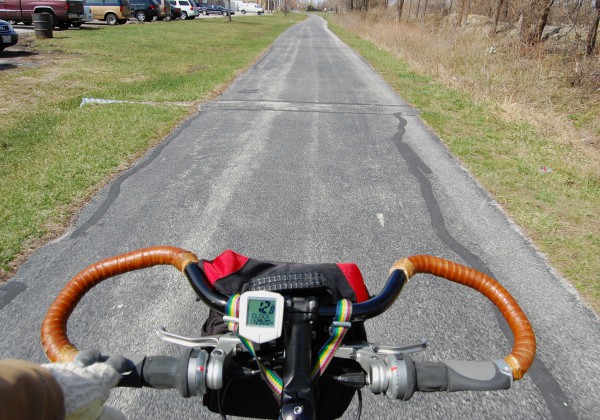Trekking bars are not a new incarnation of an energy bar. Trekking bars are actually bike handlebars. Sometimes referred to as butterfly, hybrid, or touring bars, trekking bars originated with touring bikes in continental Europe and spread across the world to the UK, the United States, and other countries. Trekking bars are designed for comfort and efficiency on long rides, and typically found on touring bikes.
What they Are
Touring, butterfly or trekking bars work similarly to drop bars with different hand positions. Instead of your hand positions going up and down, trekking bar hand positions go forward and back. You don’t reach down with trekking bars, but instead reach farther forward. This position creates a more stretched out torso, which does tend to lower you a bit, but not as much as drop bars.
Long Distance Bars
Trekking bars are designed for long distance, multi-day cycling so using them on a bike meant for faster rides is not ideal. The wide side position also offers better control at slow speeds and over rough terrain, especially when heavily loaded.
Why You Need Them
The most important criteria for a touring bike is comfort. Trekking bars offer more comfort than drop bars in most touring situations. This isn’t just about the saddle. How is the whole bike going to feel with trekking bars, day after day, mile after mile for the duration of your tour. Trekking bars also give you more room for things like bells, mirrors, and extra gear.
Avoid Numb Hands
When your hands are in the same position for hours, and especially if you’re riding everyday for a week or more, the pressure on nerves can cause you to lose sensation in your hands. Avoiding numb fingers, hands, arms and wrists are one big advantage of trekking bars.
Four or More Hand Positions
Road bikes with drop bars provide a rider at least three main hand positions. While there are technically four hand positions on trekking bars — they also have a wide spectrum of space between positions. If you want to experiment, almost unlimited combinations can be found that may be comfortable for you. If you’re a rider who needs to move your hands frequently when riding, having so many combinations for hand position is ideal. Even for those who don’t have injuries or ailments that require position changes, it’s a good idea not to stay in one position for too long to prevent strain, injuries, pain, and numbness.
Climbing Concerns
Another benefit of trekking handlebars over drop bars is that the large “side” hand position gives you more leverage when climbing with a heavy load. But on the flip side of the climbing argument is the fact that having the bars curve back to the middle can interfere with your knees if you like to climb out of the saddle.
Never Upside Down
Trekking bars can be flipped over to ride on either side (neither side is really considered upside down), and they can be changed so that the opening point is closest to your body, or flipped so that the opening is at the farthest point from your body. Both of these set-ups work fine. It’s a matter of personal preference or what feels natural to the individual rider more than anything else.
Stem Control
The stem on your bike will regulate how trekking bars are installed on any given bike. Extremely short stems such as on a touring or cruising bike, typically benefit from the handlebars facing forward. Long stems typically require the bars facing back toward your body. A simple stem swap can make them face either direction.
Stable Touring Bike Feel
If you come from a road or mountain biking background, a fully-loaded touring bike with trekking bars may at first feel cumbersome and heavy, but you’ll soon learn that the design is in its stability. You will be pleasantly surprised at how spacious a touring bike feels with trekking bars when compared to your road or mountain bike.
Switching to Trekking Bars
Road bikes are not set-up, nor are they easily compatible with racks and other equipment and are not typical candidates for trekking bars. One option is adding trekking bars to a mountain bike, but it too may require considerable effort. Depending on what you have now and how everything is set up, you might have to switch out brake levers and shifters. The other concern is stem length, which will may or may not need to be changed.
What They Can Do For You
Although they may look funny, even cumbersome, trekking bars can add more comfort to longer rides by providing you with more versatility for hand positions, gear, and bike handling. They’re not supposed to look aerodynamic or cool, and after taking a spin on them you’ll appreciate what they can do for you.
Other Bar Designs
If you’re not sold on trekking bars, other types of bars, such as the mustache bar, also adds comfort without the extra bulk of the trekking bar. It’s somewhere between a drop bar and a flat bar and worth looking at if you’re considering long distance riding. What type of handlebar you put on your bike is a matter of personal preference, pure and simple. It’s mostly a matter of trying them out and seeing what you like.
